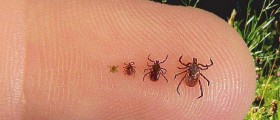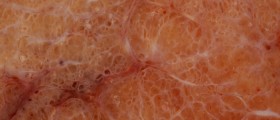
Lyme disease test
The main purpose of Lyme disease test is to determine whether there are any antibodies to the Lyme disease bacteria called Borrelia burgdorferi in the blood. Specific kinds of ticks are responsible for the spreading of these bacteria. Diagnosing Lyme disease is not an easy task for the doctors because the symptoms of this disease are similar to many other diseases and conditions. A physical exam will be performed and the doctor will look into the medical history of the patient if there is even the slightest suspicion of Lyme disease. Antibody tests are performed in almost all patients but certain other tests exist as well.Apart from the blood test for the identification of antibodies, the test can also be performed on fluid from the spine or from a joint. The antibodies will not show themselves right after a person got infected. Even two months may pass before the antibodies are noticed in the blood test. Antibodies will remain in the body for a period of years after they have formed. In some situations the antibodies remain in the body even after the disease was treated with success. However, the test cannot tell the exact time when a person got infected. It could have happened recently or sometime in the past. Three tests that are able to discover Lyme disease are available. Enzyme-linked immunosorbent assay or ELISA is the name of the test that is being used most often. In addition to being successful, the test is also quick to discover Lyme disease antibodies. The experts agree that this test is the most sensitive as well. Indirect fluorescent antibody or IFA and Western blot test are the names of the other two tests that are being performed when Lyme disease needs to be identified. Western blot test is mainly performed in order to discover a chronic Lyme disease infection. When testing for the antibodies of Lyme disease, the doctors mainly follow a process that consists of two steps. The first step is to use the ELISA or IFA and the second step is to use Western blot test to confirm the results.
In addition to these three tests, there are two more than can be done when Lyme disease needs to be identified. The names of these tests are Polymerase chain reaction test or PCR and skin culture. When skin culture is performed, a tissue sample will be checked for the bacterium that leads to Lyme disease. However, the problem is that it takes several weeks for the results to come.Are there any risks of Lyme disease test
Lyme disease testing is not ordered often. In order for the tests to be ordered, a person needs to show certain symptoms that point to an infection with B. burgdorfei. Apart from this, a person should live or at least has visited an area where deer ticks or black-legged ticks are seen quite often. A bite form one of these ticks is another reason for the tests to be ordered. Symptoms of Lyme disease do not differ a lot from several other more often seen diseases. However, it is significant to go to the hospital when they are spotted. The most often seen sign of Lyme disease is a “bulls-eye” rash at the site of the bite. The rash spreads as well. Some of the other often seen symptoms include fever, chills, headache and fatigue.Proper treatment of Lyme disease is essential in order for certain complications to be avoided. If left untreated, Lyme disease can lead to intermittent joint pain, meningitis, facial paralysis, feelings of weakness and numbness in arms and legs, problems with memory and in some situations even the eyes and the heart can be affected.
The chances of experiencing certain problems during a Lyme disease test are small but they do exist. A tinny bruise at the site where the blood was taken occurs most often. Keeping the pressure on that site for several minutes will significantly diminish the chances of a bruise. Phlebitis or a swollen vein can occur as well after the blood test is taken. This problem can successfully be treated with the use of warm compress. Those who suffer from bleeding disorders may experience ongoing bleeding. It is vital to mention that a person is suffering from any of the disorders or that he or she is on certain blood-thinning medicines before the test is performed.















Your thoughts on this
Loading...